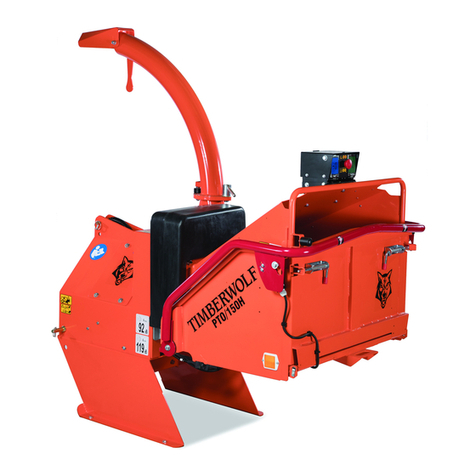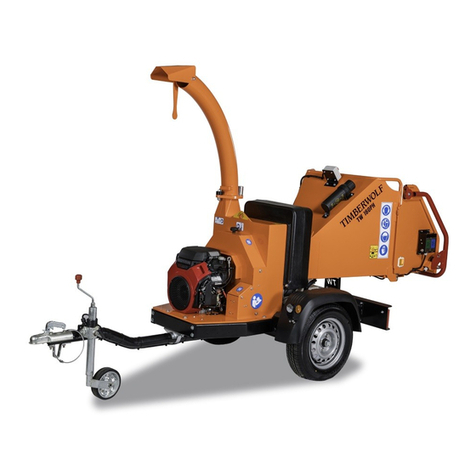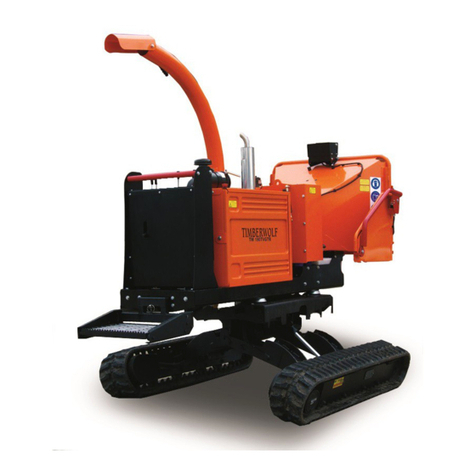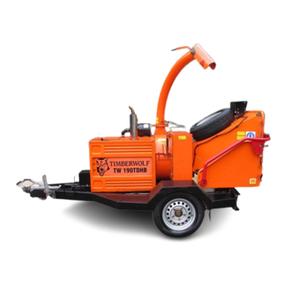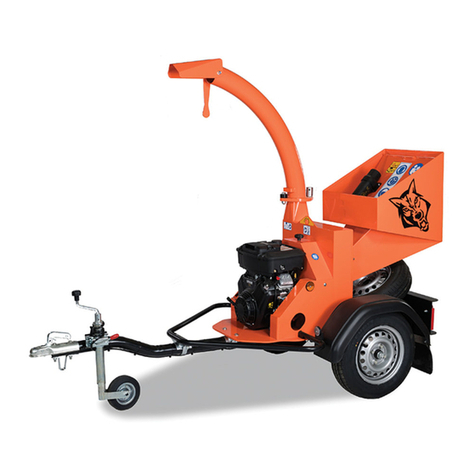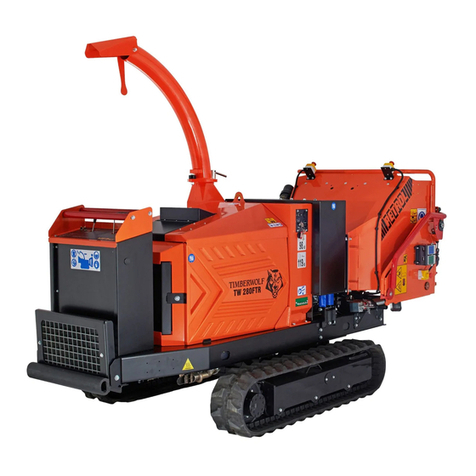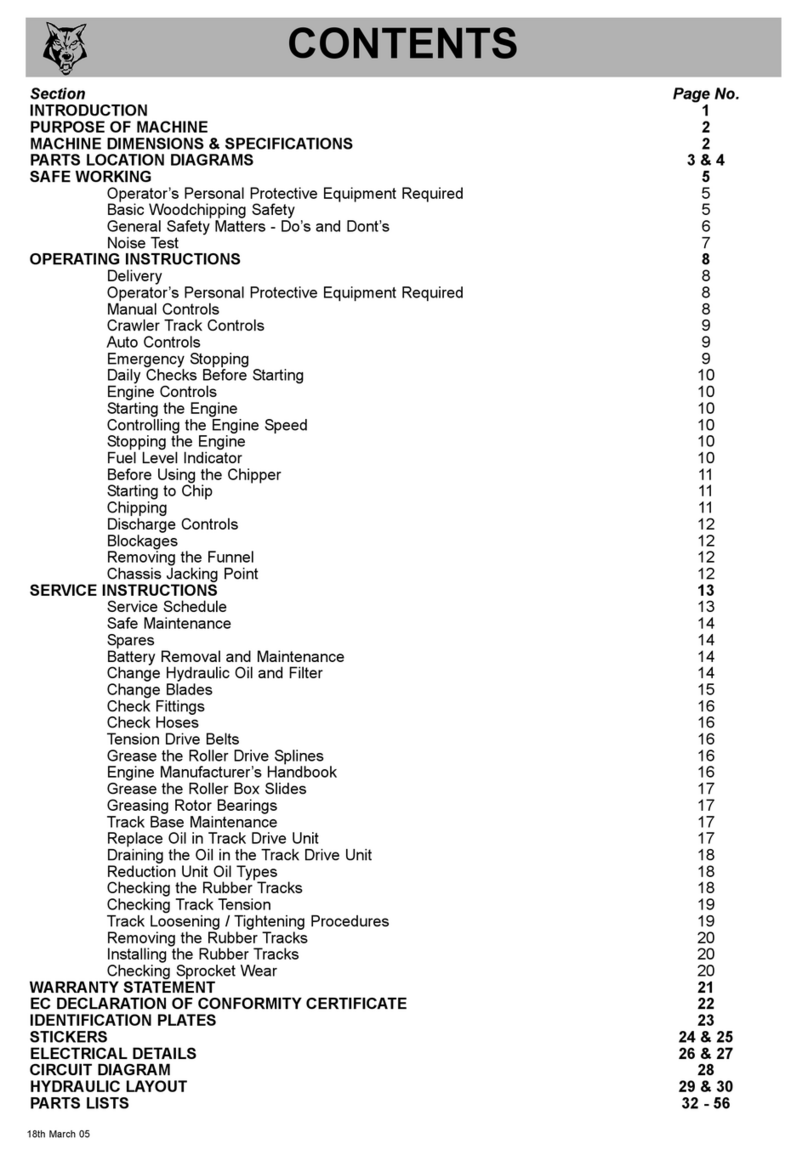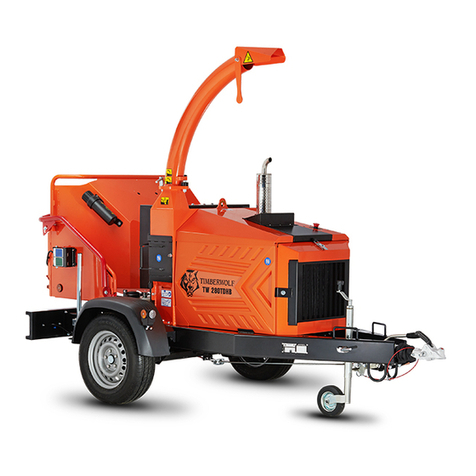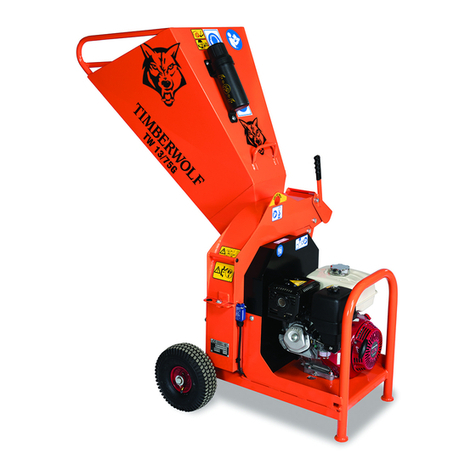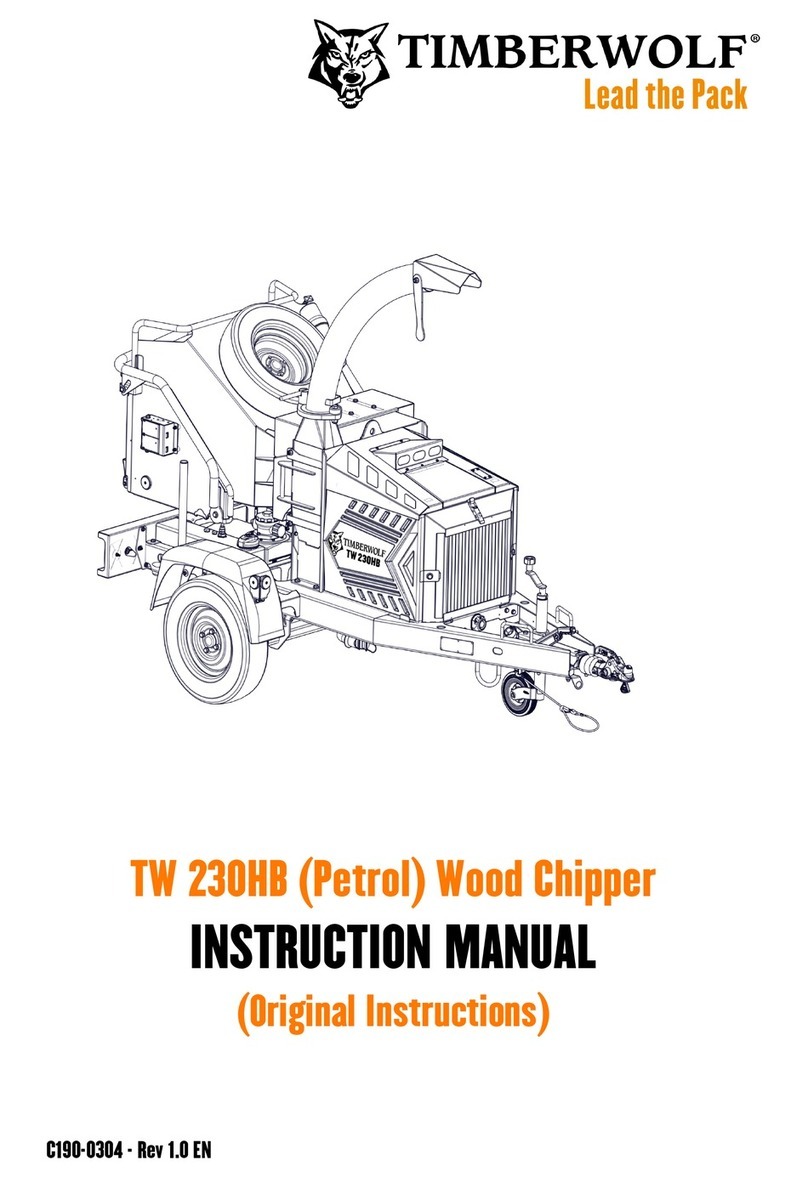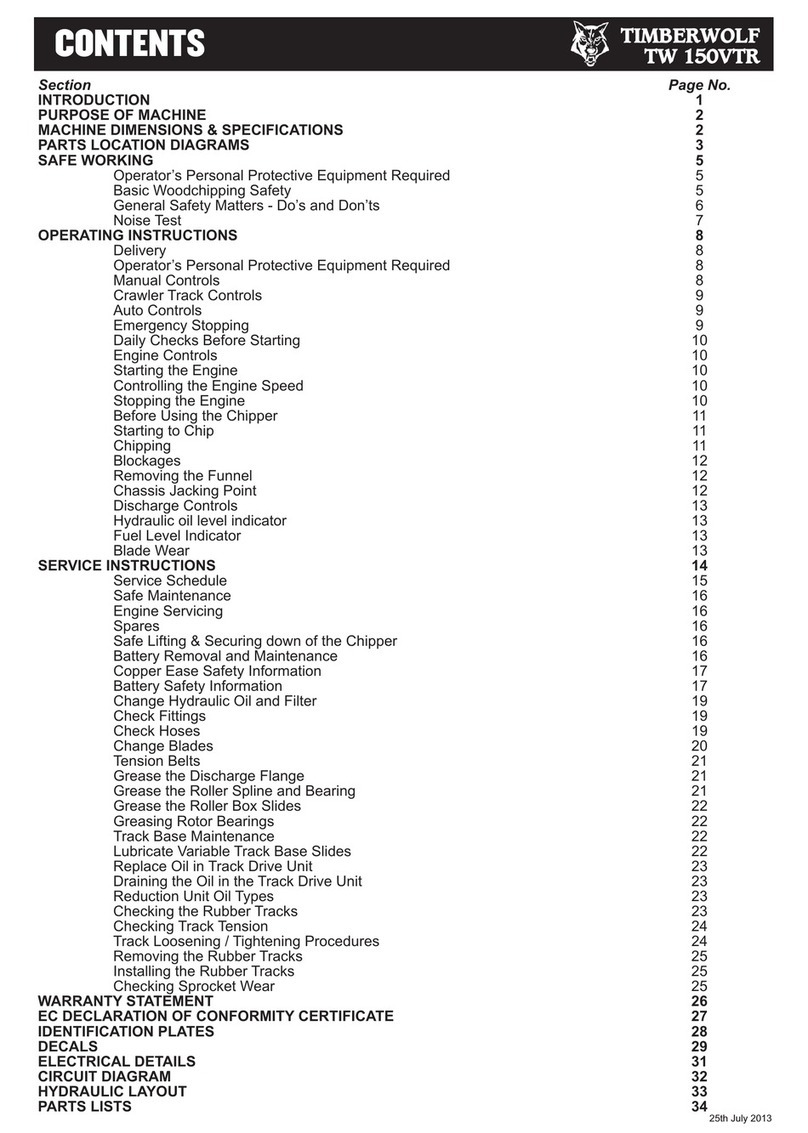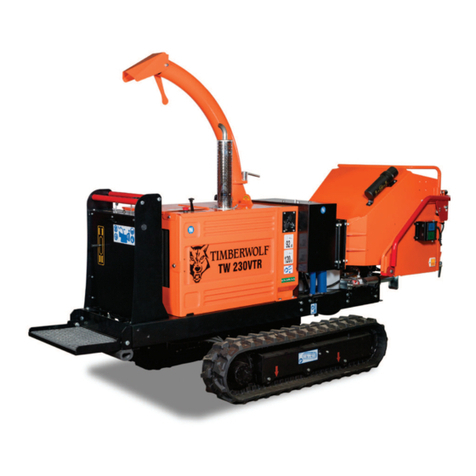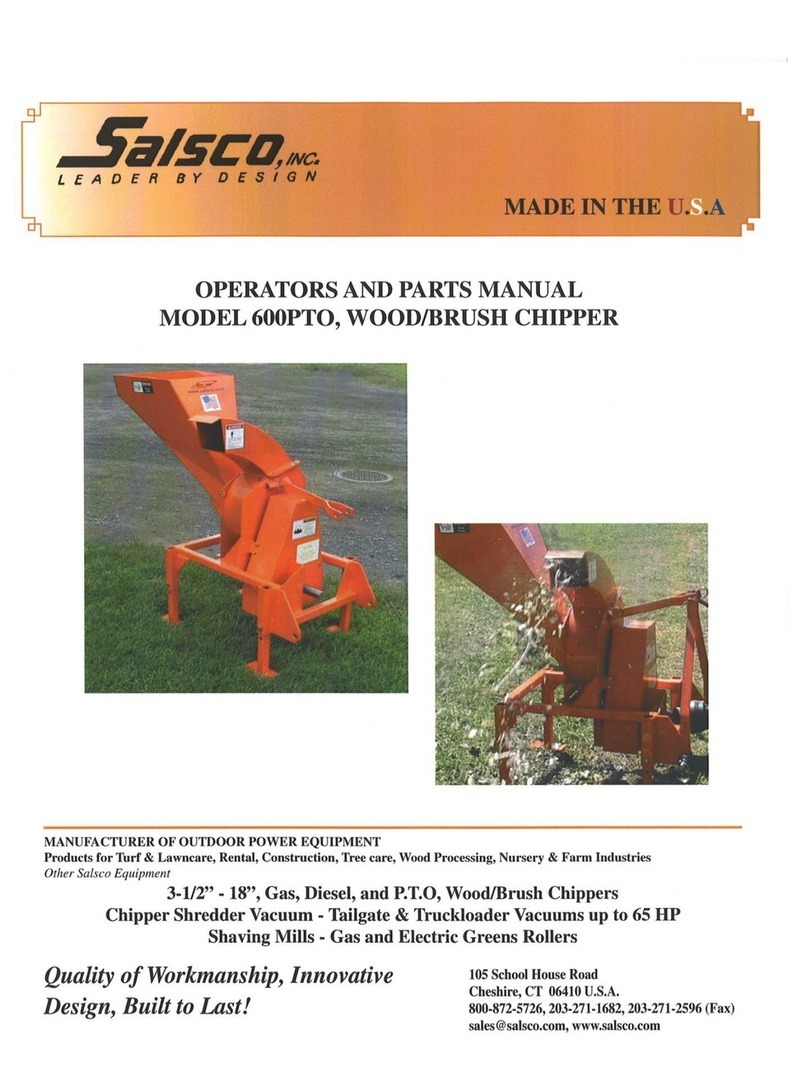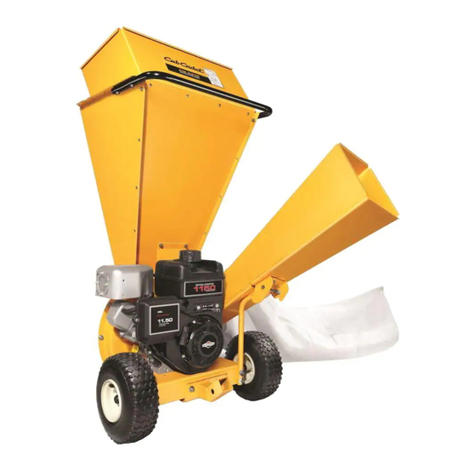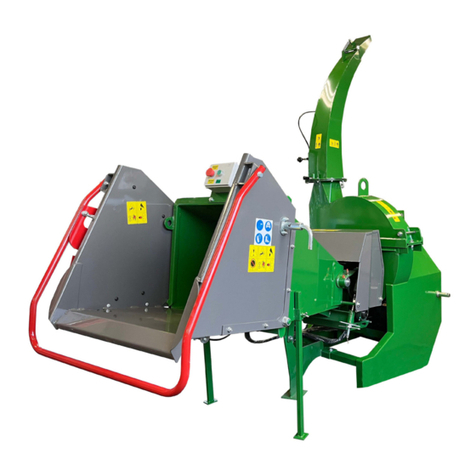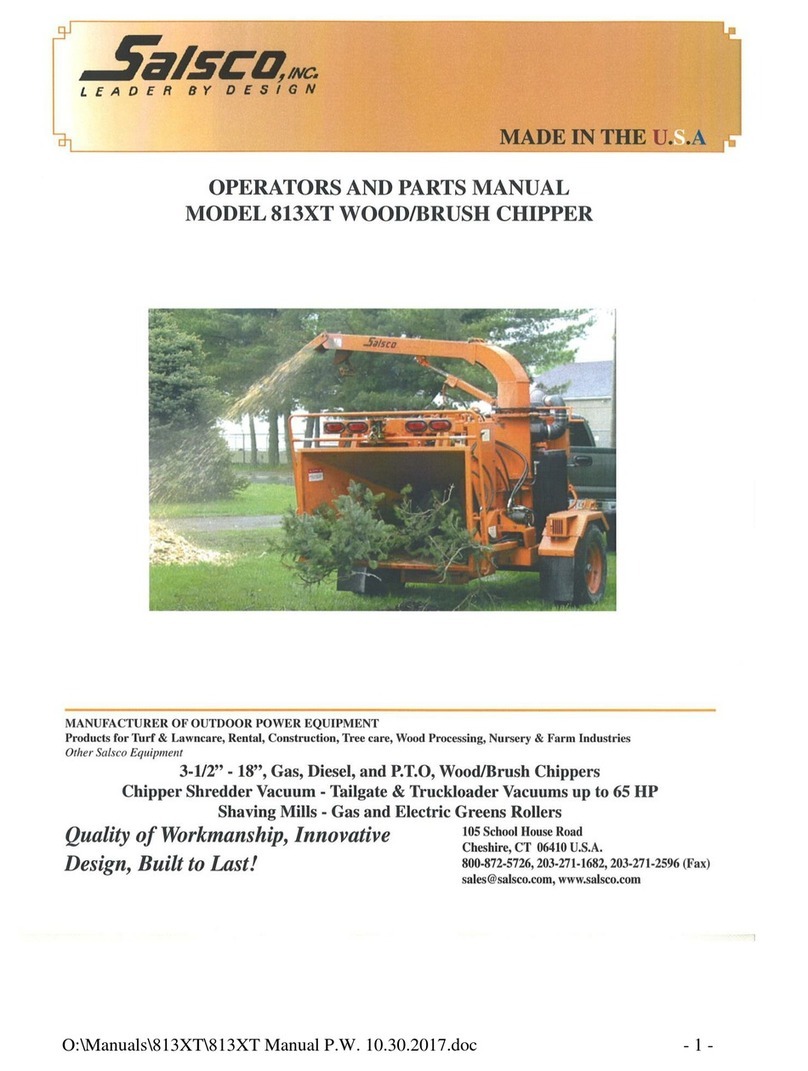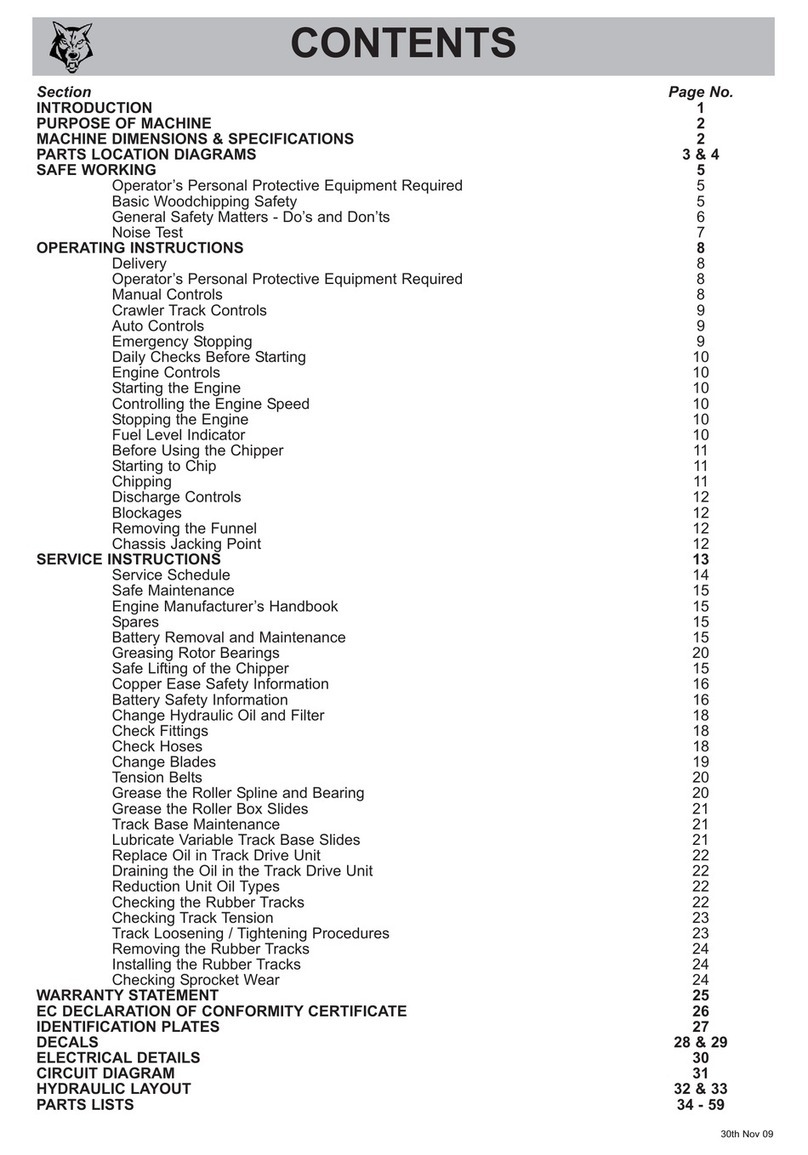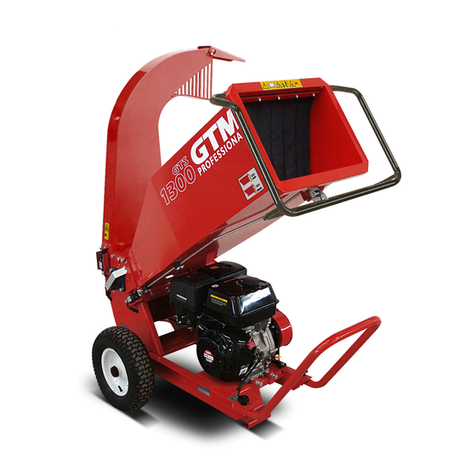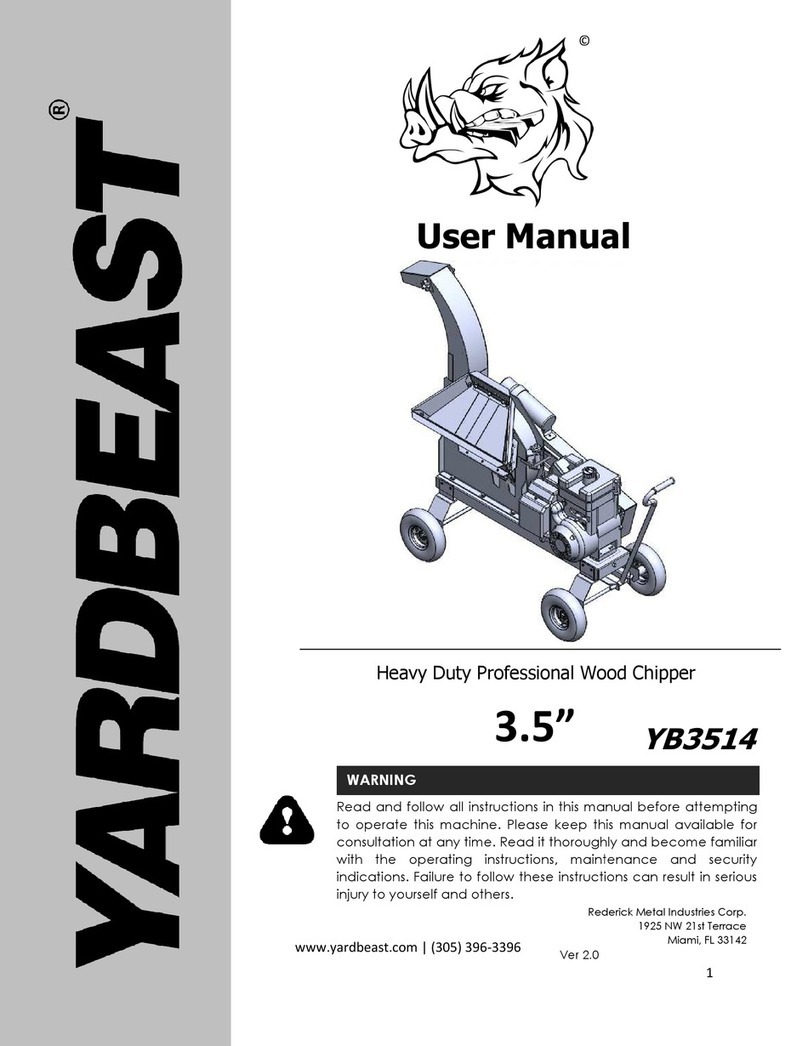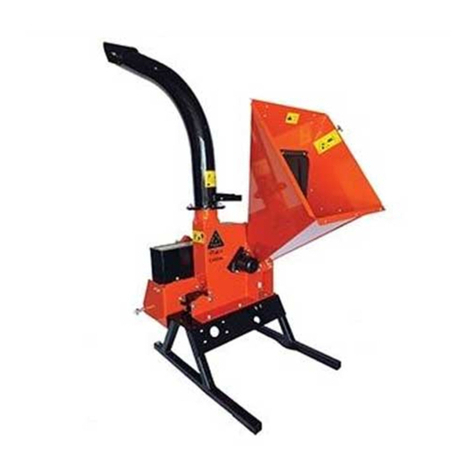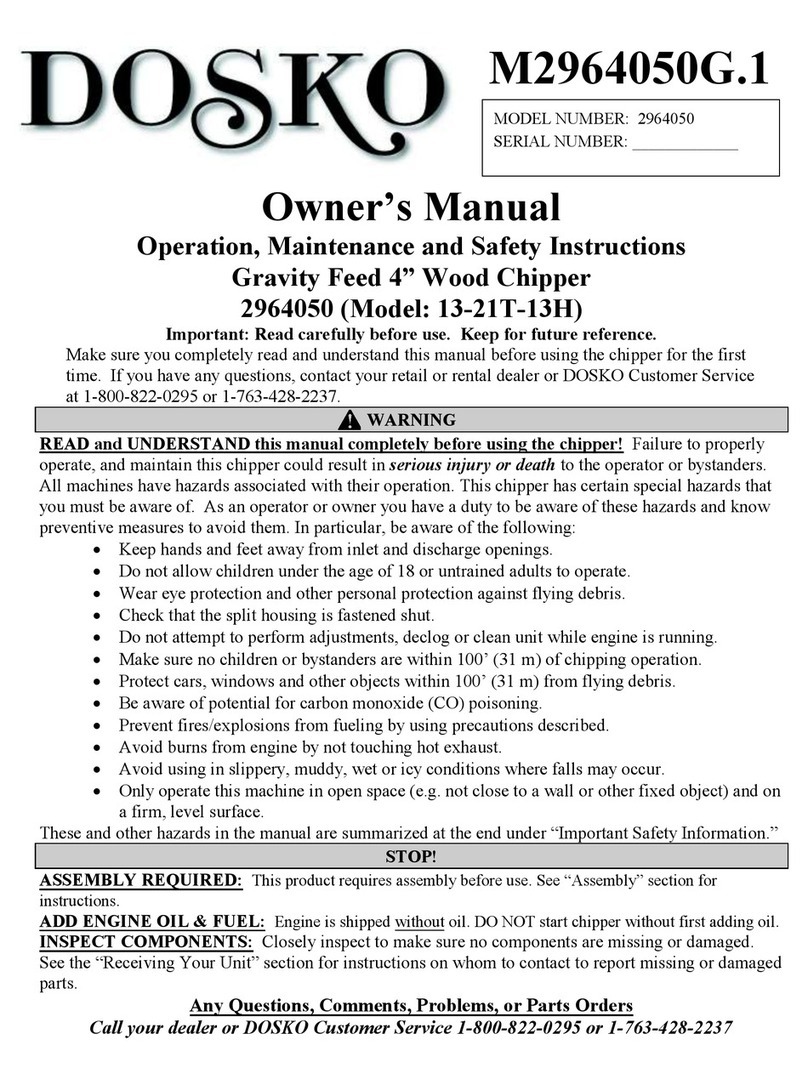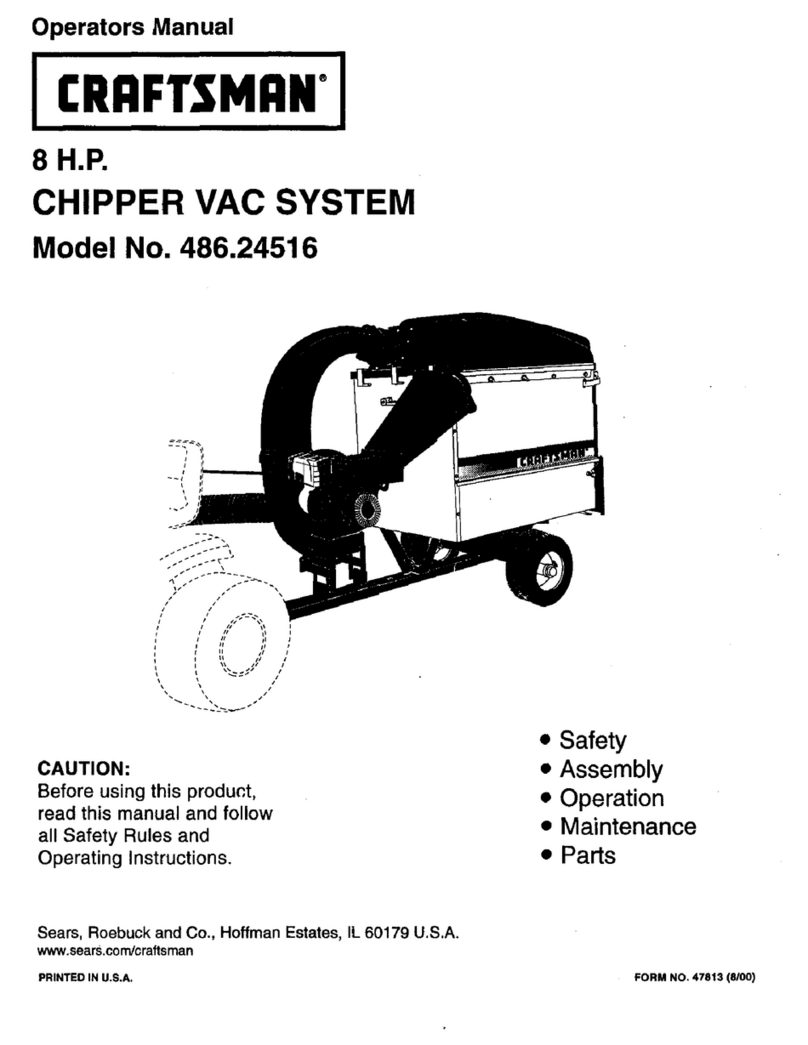5 / 55
SAFE WORKING
C190-0101 25.07.2017 Rev: 1.0
ALWAYS stop the chipper engine be ore making any adjustments, re uelling or cleaning.•
ALWAYS check the rotor has stopped rotating and remove the chipper ignition key be ore maintenance o any•
kind, or whenever the machine is to be le t unattended. I in doubt, look through the in- eed unnel to see i
rotor is still moving.
ALWAYS check the machine is well supported and cannot move. I working on an incline,•
position on solid ground, across the slope.
ALWAYS operate the chipper with the engine set to maximum speed when chipping.•
ALWAYS check (visually) or luid leaks. I ound, resolve the leak be ore operating the chipper.•
ALWAYS take regular breaks. Wearing personal protective equipment or long periods can be•
tiring and hot.
ALWAYS keep hands, eet and clothing out o eed opening, discharge and moving parts.•
ALWAYS use the next piece o material or a push stick to push in short pieces. Under no circumstances•
should you reach into the unnel.
ALWAYS keep the operating area clear o people, animals and children.•
ALWAYS keep the operating area clear rom debris build up.•
ALWAYS keep clear o the chip discharge tube. Foreign objects may be ejected with great•
orce.
ALWAYS ensure protective guarding is in place be ore commencing work. Failure to do so may•
result in personal injury or loss o li e.
ALWAYS operate the chipper in a well ventilated area - exhaust umes are dangerous.•
Ensure a ire extinguisher is available on site.•
Ensure a personal irst aid kit and hand cleaning materials are available (e.g. waterless skin cleanser).•
ü
TW 230DHB
WARNING
Chainsaw sa ety helmet (EN 397) itted with mesh visor (EN 1731) and•
ear de enders (EN 352).
Work gloves with elasticated wrist.•
Steel toe cap sa ety boots (EN 345-1).•
Close itting heavy-duty non-snag clothing. High-visability clothing (EN•
471) i risk assessment identi ies the need.
Face mask i appropriate.•
DO NOT wear rings, bracelets, watches, jewellery or any other items•
that could be caught in the material and draw you into the chipper.
OPERATOR'S PERSONAL PROTECTIVE EQUIPMENT PPE
BASIC WOODCHIPPING SAFETY
The operator should be aware o the ollowing points:
MAINTAIN A SAFETY EXCLUSION ZONE around the chipper o at least 10 metres or the general public or employees•
without adequate protection. Use hazard tape to identi y this working area and keep it clear rom debris build up.
Chips should be ejected away rom any area the general public have access to.
HAZARDOUS MATERIAL - Some species o trees and bushes are poisonous. The chipping action can produce vapour,•
spray and dust that can irritate the skin. This may lead to respiratory problems or even cause serious poisoning.
Check the material to be chipped be ore you start. Avoid con ined spaces and use a ace mask i necessary.
BE AWARE when the chipper is processing material that is an awkward shape. The material can move rom side to•
side in the unnel with great orce. I the material extends beyond the unnel, the brash may push you to one side
causing danger. Badly twisted brash should be trimmed be ore being chipped to avoid thrashing in the eed unnel.
BE AWARE that the chipper can eject chips out o the eed unnel with considerable orce. Always wear ull head and•
ace protection.
ALWAYS work on the side o the machine urthest rom any local danger, e.g. not road side.•
NEVER leave the chipper unattended when running. Machines must be supervised at all times when in use.•
In the event o an accident, stop the machine, remove the key and call the emergency services immediately.•
Th chipp r will f d mat rial
through on its own. To do this, it
r li s on sharp blad s both on th
f d roll rs and th chipp r rotor.
To k p th blad s sharp, only f d
th machin with cl an brushwood.
DO NOT put muddy/dirty wood,
roots, pott d plants, bricks, ston s
or m tal into th chipp r.
GENERAL SAFETY MATTERS
